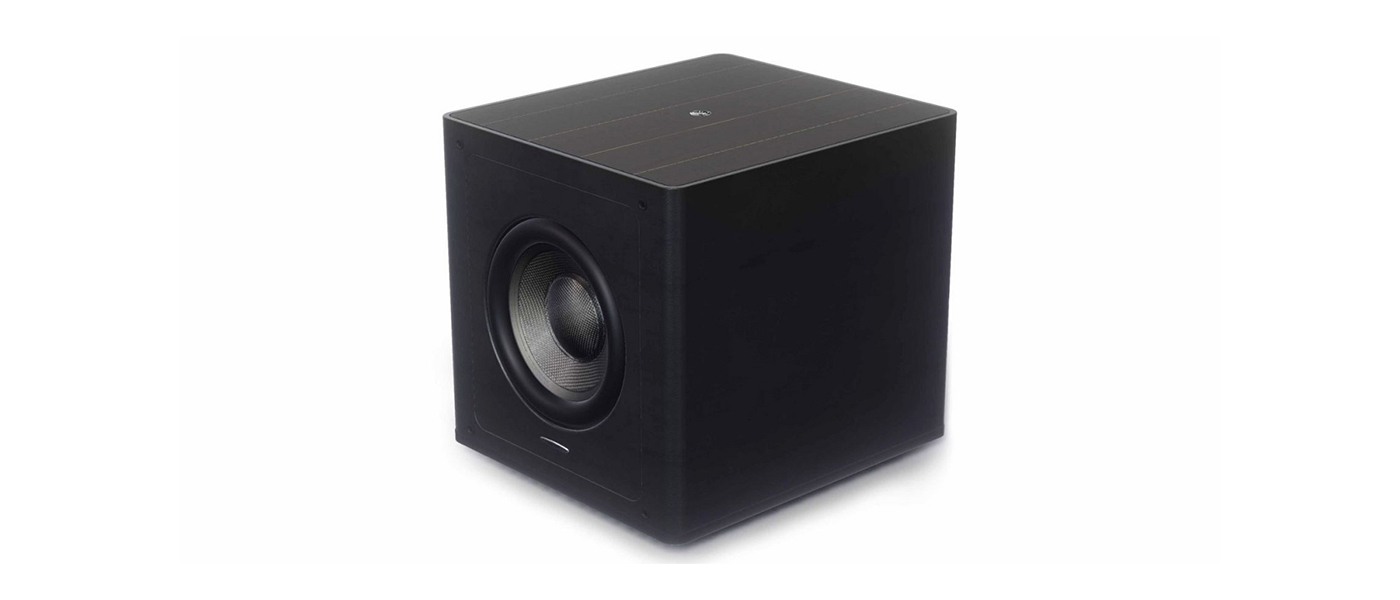
The SB-3000 is a member of the 3000 series of subwoofers, which lie pretty much in the middle of the pack within the SVS’ product hierarchy. The SB-3000 utilizes a sealed enclosure design and has a 13-inch forward-facing high-excursion driver powered by an 800-Watt RMS Class D amplifier. For this review, SVS sent a pair of SB-3000 subwoofers in glossy black finish (MSRP $,1099 each). The SB-3000 subwoofer is quite compact for a 13-incher, but impressively its specifications indicate the capability to produce low bass extension down to 18 Hz. The subwoofer features wireless Bluetooth control, which allows users to conveniently manage the onboard DSP and other settings through a smart phone or tablet. My review below will highlight the SB-3000 features in more detail and discuss specifically the performance of the subwoofers in music and home theater applications.
SVS-SB-3000 subwoofer
- Compact size for a subwoofer with a 13-inch driver.
- Solid build quality and finish
- Good looking subwoofer with rounded-edges cabinet sides and curved-mesh grille.
- Bass extension down to below 20 Hz.
- Authoritative yet articulate bass output.

Having been impressed recently by a little-but-mighty subwoofer from the SVS’ 1000 Pro series product line, the SB-1000 Pro, I became more curious than ever about the company’s other subwoofer products. Hence, I requested another subwoofer model to review. Based on my room size and preference, SVS suggested a pair of SB-3000 subwoofers for the review, which I gladly accepted.
For a subwoofer with a 13″ driver, the SB-3000 is probably as compact as it can be. Its cabinet has an almost-cube form factor with its largest dimension of less than 16″. As such, this subwoofer does not take up much floor space and can easily be accommodated even in a relatively small room. The rounded edges on the sides of cabinet accentuate the subwoofer’s overall look, giving it a departure from just a plain boxy appearance. There are two finish options that you can get for the SB-3000: premium black ash ($999.99) or piano gloss black ($1,099.99). The review samples come in piano gloss black finish, which to my eyes, elevates the visual appeal of the subwoofers.
Driver:
13″ high excursion with two dedicated toroidal ferrite magnets
Driver materials:
aluminum cone with high-excursion SBR surround, FEA optimized cast aluminum driver basket
Cabinet material:
MDF
Amplifier:
800 watts RMS class D design with 2,500+ watts peak output
Frequency response:
18 – 270 Hz +/- 3 dB
Signal processing:
50 MHz Analog Devices DSP with 56-bit filtering
Low Pass filter slope:
Selectable 6, 12, 18 or 24 dB / octave
Low Pass filter range:
Adjustable 30 – 200 Hz (in 1 Hz step)
Phase:
Adjustable 0o – 180o (in 1o step)
Parametric EQ:
Frequency: 20 – 200 Hz (in 1 Hz step)
Boost: -12.0 – 6.0 dB (in 0.1 dB step)
Q factor: 0.2 – 10.0 (in 0.1 step)
Room Gain Compensation:
Selectable frequency: 25, 31, or 40 Hz
Selectable slope: 6 or 12 dB / octave
Grille:
Steel mesh, detachable
Dimensions:
15.2″ (W) x 15.6″ (H) x 15.7″ w/out grille or 17.8″ with grille (D)
Weight:
54.5 lbs
Available finishes:
Premium black ash or piano gloss black
MSRP:
$999.99 (for premium black ash finish)
$1,099.99 (for piano gloss black finish)
Company:
SECRETS Tags:
SVS, SVS SB-3000 Subwoofer, SVS Subwoofer, Subwoofer, Subwoofer Review 2021
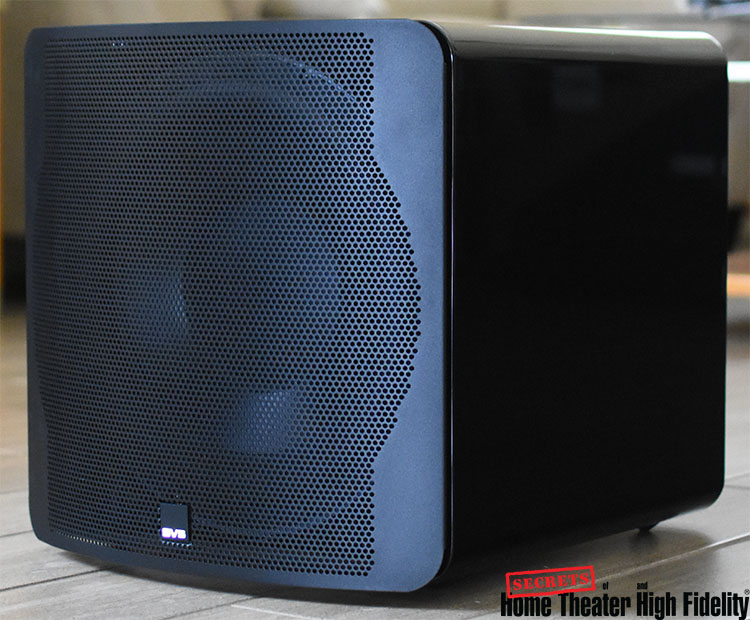
Typical to SVS products, the SB-3000 has solid build quality and excellent finish. The subwoofer comes with a protective steel mesh grille that curves outward, giving enough headroom for the high-excursion 13″ driver to operate. The grille attaches to the front panel of the cabinet using four tight-fit pin-and-cup attachments. Subjectively, this unusually designed grille gives the subwoofer a distinctive look. While some subwoofers may look better with their grilles off, in my opinion, the SB-3000 looks more appealing with the grille on.
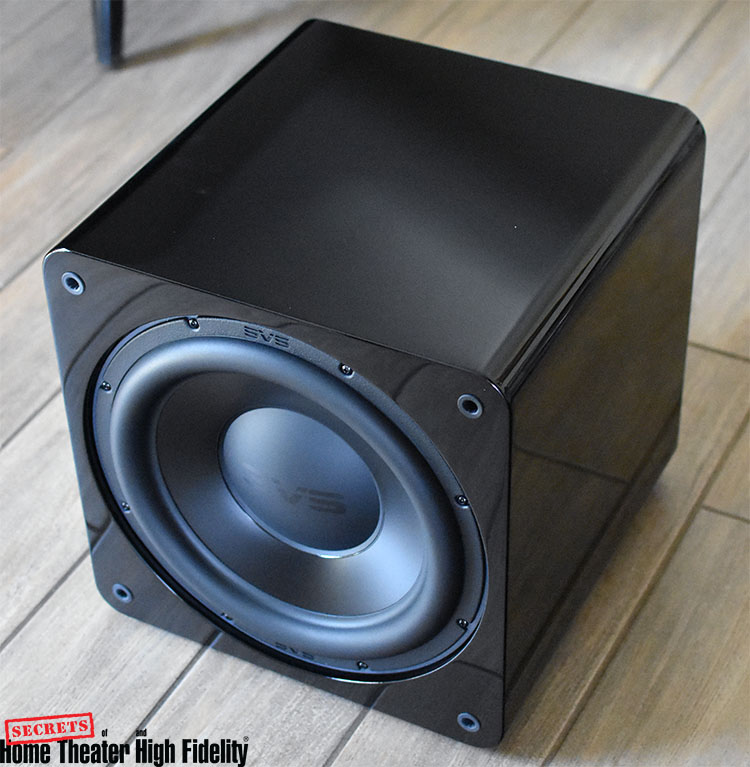
The SB-3000 is powered by the SVS’ Sledge STA-800D2 class D amplifier that can produce 800 W RMS (2,500+ W peak) power. This amplifier only accepts line-level (including LFE) input signals. Although this is sufficient for most applications, I personally think that the provision of high-level input connectors would be a great addition to increase the connection versatility of the subwoofer. The amplifier module has a 50 MHz Analog Devices audio DSP integrated in it. This DSP module provides signal control and equalization functions to tailor the subwoofer’s response for best results. The DSP module brings with it high-resolution adjustment capability, allowing precise low-pass filter control in 1 Hz step, phase setting adjustment from 0o to 180o in 1o step, and gain control in 1 dB step. It also offers a three-channel parametric equalization and room gain compensation, which are extremely useful to compensate for the room’s acoustic properties. The provision of room equalization features opens more flexibility in the placement of the subwoofer. While you still do not want to place the subwoofer in the location that attenuates a critical range of bass frequencies in the listening position, you do not have to painstakingly find the most ideal location for it either to get the best possible bass response. The room equalization feature can help in smoothing out the bass response that you get from placing the subwoofer at, perhaps, a convenient but not so ideal location.
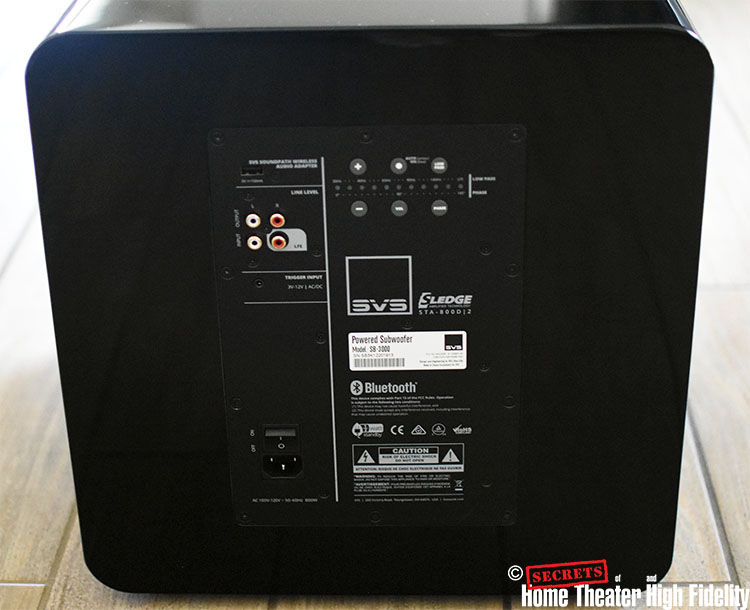
Typical to the SVS subwoofer products, the SB-3000 is equipped with a Bluetooth feature to allow wireless control of the subwoofer using the SVS smartphone app, which can be downloaded for free and is available in iOS, Android, or Amazon operating systems. The convenience that this wireless control feature brings is tremendous. It allows you to adjust the subwoofer settings from your seat, eliminating the need to get up from your seat, walk to the subwoofer location, and reach the back panel of the subwoofer to perform the adjustments. This app is a must have to fully utilize the DSP functions of the subwoofer. Only limited subwoofer controls can be accessed from the rear panel (volume, phase, and crossover frequency). Some of the DSP adjustments, such as crossover slopes, parametric equalization, room gain compensation, and preset settings, can only be accessed using the app. I found the app’s user interface to be clear, logical, and easy to understand. I installed the app on two devices during the review: a Samsung Galaxy Note20 phone (Android) and an Apple iPad tablet (iOS). The app worked well on those two devices, although I noticed that the switching control between the subwoofers (if there are more than one subwoofer controllable using the app) was smoother and quicker on the iPad than on the Note20.
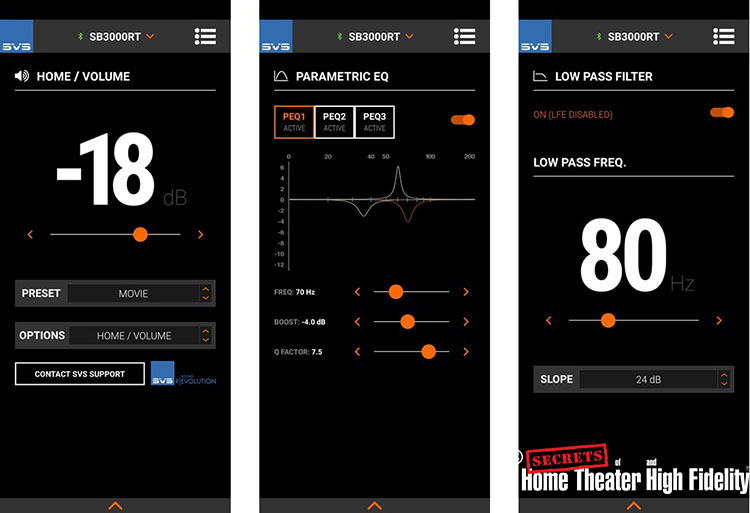
Although the SVS app is quite comprehensive for controlling the subwoofer, it does not have a response measurement feature. The app does not access the device microphone to capture the response of the subwoofer to a certain test tone. Knowing the bass response characteristics prior to performing the room equalization is critical to achieve good overall bass results. In the SVS case, this needs to be done outside the app, for example, using third party calibration microphone and software. I might be asking too much, but it would be nice if SVS could implement the standard test-tone generator in the subwoofer and include a response measurement and analysis feature in the app. That would really make the app an all-in-one subwoofer response control and analysis software.
After sufficient break in and before I calibrated the subwoofers, I did a quick close-miking nearfield measurement of the SB-3000 response (about 1 ft from the driver) using REW (Room EQ Wizard) software and a calibration microphone. As all these measurements were done in room, which measures 16 ft wide with a ceiling height of 9 ft and open to the other areas in the house, the effects of room interaction will still be there even in the close-miking situation. Typical playback volume level (not the maximum output level) was used for the measurement. The result for a single SB-3000 in LFE mode with other equalization turned off is shown in the figure below. The linearity of the frequency response of the SB-3000 is sufficiently good in the stated frequency range. There was a slight bump in the 50-150 Hz frequency range, which might be attributed to the room boundary interactions. This measurement also confirms the 18-270 Hz frequency response of the subwoofer as stated in the published specifications.
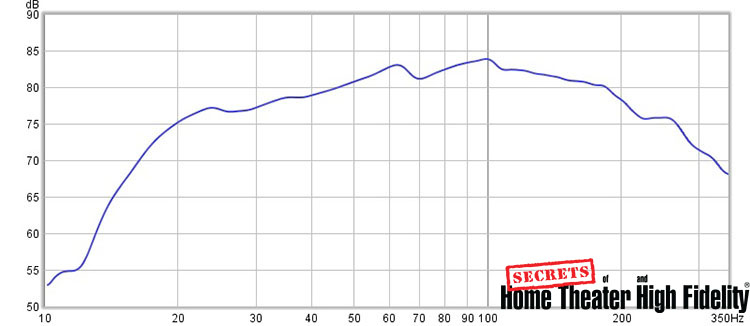
I also measured the effects of various adjustments and equalizations available in the subwoofer, similar to what I did with the SB-1000 Pro. I am glad to report that all these controls are effective and functions as they should in modifying the response outcome of the subwoofer.
The final set of measurements presented below were done at the listening position after I placed the two SB-3000 subwoofers in their final positions, which in this case was near the front corners of the listening room. The crossover of the subwoofers was set at 80 Hz. The frequency response that I obtained without any room compensation is as shown in the purple trace in the graph below. The two subwoofers produced useful frequency extension down to about 16 Hz or so, however, there were some noticeable peaks and valleys in the 30 – 80 Hz frequency range. This was exactly the situation where the 3-band parametric equalization (PEQ) feature of the SB-3000 came in handy. In this particular example, I used two-band equalization to lower the response peaks at 35 Hz and 70 Hz. As can be seen from the figure below (red trace), the use of the PEQ effectively smoothed the resulting bass response in the 30-80 Hz range at the listening position.
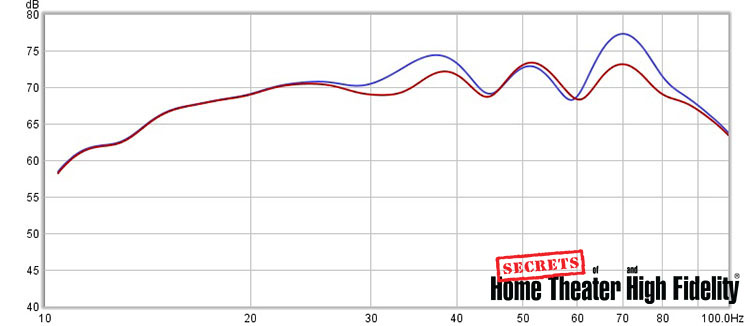
I started my critical listening of the SB-3000’s once they had been properly set up and calibrated. In stereo applications, I used the pair of SB-3000’s to complement the bass response of my Revel Ultima Studio tower speakers, whose response starts to roll off below 40 Hz in my room. For this purpose, the low-pass crossover of both SB-3000’s was set at 45 Hz with 90o phase and 24 dB/octave slope. A single-channel PEQ to suppress the 35-Hz bass peak was utilized. With these settings, the two SB-3000’s blended extremely well with the response of the Ultima Studios, indulging me with music in its complete full-range presentation. Needless to say, the SB-3000s performed their job convincingly in this regard. With their taut, articulate, and punchy bass, these subwoofers supplied a solid bass foundation for the program material, elevating the overall music listening experience. Moreover, the two SB-3000’s generated all this bass with effortless sense and with seemingly unlimited headroom.
The track Loyal Brave True by Christina Aguilera from Disney’s Mulan soundtrack (2020) contains deep rhythmic bass from big drums throughout that sounded glorious with the SB-3000’s in the system. Even though the Ultima Studio speakers were quite capable in the bass department, the improvement that the SB-3000’s contributed was clearly noticeable. The lower extension at the bottom end became more obvious and the bass response carried more oomph which made the whole presentation more majestic.

The SB-3000’s also skillfully navigated through the rather fast-paced bass in the track Nightrider (featuring Freddie Gibbs) from the What Kinda Music (2020) album by Tom Misch and Yussef Dayes. Bass transients were quick, and the underlying bass impact gave a sense of liveness in the presentation. The SB-3000’s added the necessary bass weight and lower extension that were missing from the music without the subwoofers.

For the home-theater tests, I set up the SB-3000 pair to handle the LFE channel of a 7.2 surround configuration through the Marantz AV8802 surround processor. In the LFE mode, the low-pass filter of the SB-3000 was defeated, but the PEQ can be left active. The surround setup calibration using the AV8802’s Audyssey MultEQ XT32 feature was done with the PEQ engaged.

In the not-so-distant past, only movies produced for theaters were mixed with good bass content. However, these days, there are more and more shows on TV, either through broadcasts or subscription services, that utilize the bass effects effectively. But unless you use a subwoofer to complement your TV watching experience, you probably do not notice this trend. The Netflix’s Spanish limited series The Innocent (2021) is an example of such a show that relies on rhythmic, bassy music to pace many of the ongoing action. The presence of the SB-3000’s really fleshed out the deep bass in these sequences, even some of the subtle ones that would otherwise be missing without the subwoofers. I compared watching some of these sequences with and without the subwoofers and I felt a different level of engagement. With the subwoofers turned on, the moods and the pace were conveyed better and as a result I engaged more with the atmosphere of the scenes.

To assess a fairer comparison with a single SB-1000 Pro, I turned off one of the SB-3000 subwoofers during the testing. While the SB-1000 Pro exhibited satisfying performance for home-theater applications, as I mentioned in my review of the subwoofer, the SB-3000 took my level of satisfaction to another level. For one, the SB-3000 is capable of producing bass extension to the subsonic range that is outside the reach of the SB-1000 Pro. During the car chase action sequence involving the car hitting the metal fences at high speed in Logan, the SB-3000 managed to pressurize the room with its subsonic level bass very convincingly, producing chest-thumping bass ripples. Besides the lower bass extension, to my ear, the bass of the SB-3000 sounded slightly tighter and punchier in comparison to the SB-1000 Pro. Considering that the SB-3000 is larger and more expensive than the SB-1000 Pro, its improved performance should come as no surprise. I even give the performance of the SB-3000 a nod over the more expensive, albeit older, 12-inch subwoofers in my possession, the Velodyne DD-12 and the Paradigm Defiance X12. The SB-3000 is that good!
SVS is one of the leaders in subwoofers, and the company’s knowledge and experience in designing subwoofers are truly on display in the SB-3000. It is a brilliantly designed subwoofer with a combination of features and performance that is hard to beat at its price tag.
- Compact size
- Great build quality and finish
- Wide-range high-resolution precise DSP bass-response adjustments
- Powerful onboard amplifier
- Bluetooth wireless control using smart-device app
- Quality bass outputs: punchy with great articulation
- Provision for high-level input connection
- Integration of sonic measurement into the app
The SVS SB-3000 is a great subwoofer, period. I like many things about this subwoofer: its compact size, its handsome look, its great build quality, its grille design, its powerful onboard amplifier, its extensive control features which include room equalization; a wireless subwoofer control app; and, more importantly, its performance. Its prodigious yet articulate bass performance make this subwoofer a strong all-around performer that is adept to complement the bass response of a stereo music system or to handle the bass effects of a home-theater system. Considering the combination of build quality, features, and performance, it is hard to imagine that you can get a better subwoofer at its price point. Adding a SB-3000 subwoofer should enhance the bass response of your entertainment system. Or better yet, a pair of these, like what I experience in this review, will put you in a bass bliss. Highly recommended!


